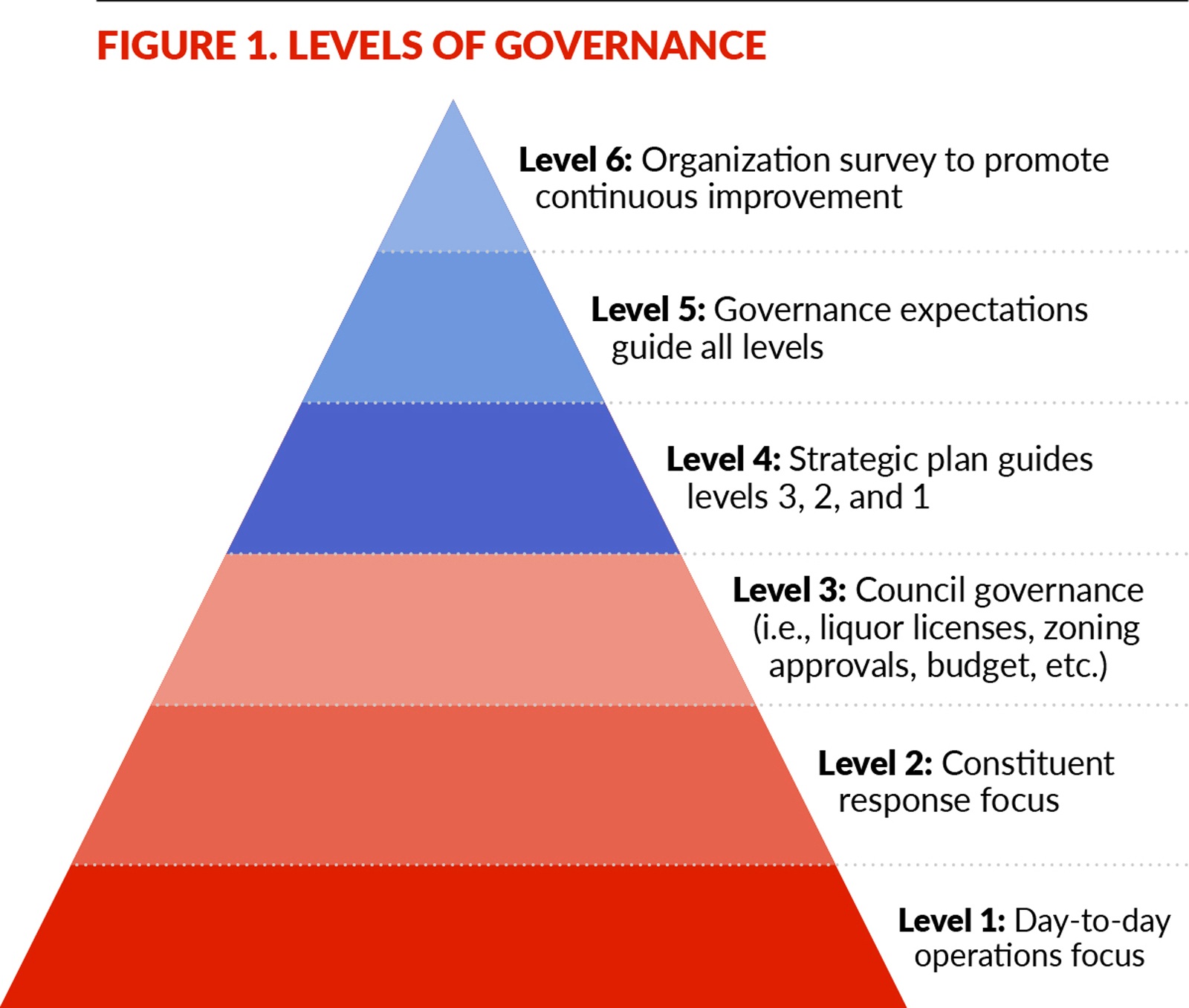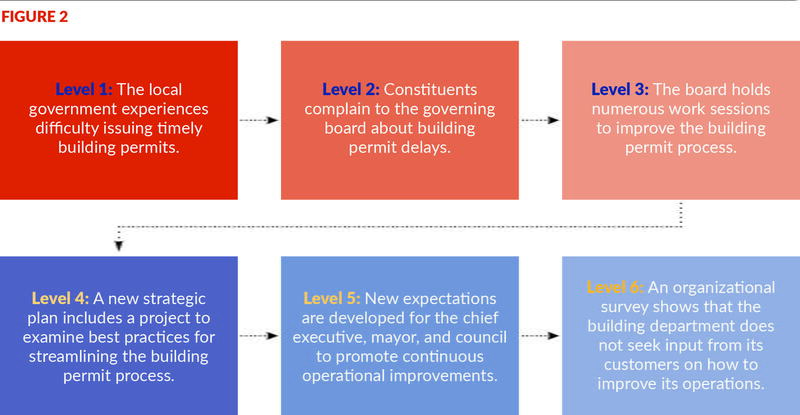
A common refrain from local government chief executives about their governing board/council: “They are in the weeds way too much.” In working as a consultant with chief executives and boards around the country, I have frequently encountered city/county managers trying to refocus their boards to think more strategically.
In my experience, boards find it much easier to focus on the here and now. Some boards love to get into operational details of issues that the community is facing. From their perspective, the issues are real and tangible, and they feel they were elected to address and fix problems the community is confronting. It is this drive to confront the routine issues that arise in governing and managing a community that is intoxicating and gives board members a sense of accomplishment. This creates a certain board member mindset: Why waste time on strategic planning? Our strategic plan is getting things done. With this mindset, the entire organization and its resources are focused on this seemingly effective routine day-to-day governance approach.
But what about managing for the community’s future? How do you manage both the routine day-to-day, but also position the community to take full advantage of emerging and future opportunities? It’s very difficult to start talking to a board about becoming more strategic when they are in a cycle of managing the routine. This was the genesis for me to develop a visual guide for boards/councils to use to determine their current level of governance. Opening this dialogue with the board is the start of their journey toward the realization that operating strategically can, in fact, help improve day-to-day operations of the organization and its services to residents. See Figure 1.

The chart identifies six levels at which boards can operate during their journey of improving the governance of their communities. The board’s focus determines the level of operation for the organization on a daily basis. Most boards love “being in the weeds” and operate at Levels 1 through 3 with a focus on day-to-day operations that ideally should be left to the chief executive and staff. For them, Level 2 constituent responses are a priority. Very little focus is paid to strategically planning for the future of the community (Level 4) or improving their effectiveness in governing the community (Level 5).
As the board/council moves to Level 4, they develop a strategic plan that not only guides the priorities at Levels 1 through 3, but opens up their organization to work on opportunities for the future of the community. Along the way, the board considers developing expectations for each other and the chief executive. Is it really that simple? Yes, it is that simple to move to Level 5. By developing expectations, the board and chief executive can both move beyond the stage of relying on the rules of their local code or state statute in defining their relationship. While these rules are important, they do not provide a playbook for ongoing governance improvement. Developing expectations is the playbook. So what are the expectations? How can any chief executive function effectively if they don’t know what their governing board expects of them? Conversely, the board should know what the chief executive expects of them in order to perform their job. It is this shared set of expectations that provides the clarity needed for teamwork. The expectations set guidelines designed to keep the board “out of the weeds” and refocus their efforts strategically on the outcomes they expect the chief executive to achieve.
The final building block (Level 6) is a survey that builds a high-performance operation that allows the board to achieve its strategic objectives and ensure effective day-to-day operations. Figure 2 demonstrates how it would work with an example of building permits.

Figure 2 illustrates that by operating at Level 3, the board will hold potentially acrimonious work sessions to try to improve the building permitting process. The alternative is to establish improving the building permitting process as a strategic priority (Level 4). The board can establish clear expectations for the management and themselves to promote and look for opportunities for continuous organizational improvement, such as with the building permit process (Level 5). Once the organization gets to Level 6 and issues an annual or biannual organizational survey, management also discovers that the building department does not have an established process for soliciting input from customers on their services and potential ideas for improvement.
Does Level 6 Governance work? I have one client that has operated at Level 6 for several years, as well as a number of clients that are at Level 5. It can work if all parties are committed to making the necessary changes to ensure their success. It by far beats the alternative of just continuing governance as usual.

MIKE LETCHER, ICMA-CM, is president/CEO of BridgeGroup LLC. ©bridgegroupllc
New, Reduced Membership Dues
A new, reduced dues rate is available for CAOs/ACAOs, along with additional discounts for those in smaller communities, has been implemented. Learn more and be sure to join or renew today!
